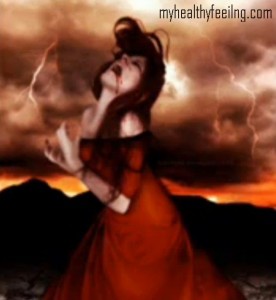Do you know that there are different types of Schizophrenia? Schizophrenia, or widely known as split personality disorder, is a mental illness that is characterized by a distorted perception of reality which consists of paranoid delusions, bizarre delusions, auditory hallucinations, disorganized speech, disorganized thinking, and social dysfunction. Symptoms shown by the person with schizophrenia can change overtime and is classified to many different types of schizophrenia.
There are five different types of schizophrenia and each is based on the symptoms a person with the disorder displays:
Paranoid Schizophrenia
Paranoid schizophrenia is a type of mental disorder characterized by delusions and auditory hallucinations. Individuals with this affliction tend to have false beliefs that a member of the family or anyone he/she knows has intentions of hurting him/her or harming his/ her family. But these patients, compared to those suffering from any of the other four types of schizophrenia, are more capable of living a normal life.
Disorganized Schizophrenia
As the name implies, disorganized schizophrenia is a type of schizophrenia that is characterized by disorganized speech and behavior making the person difficult to understand. For example, while doing something they suddenly laugh about another thing that has no connection whatsoever to what he/she is currently doing. They appear to display no sense at all, or at times, they tend to do purposeless behavior. This type of schizophrenia is the most severe type as patients are unable to perform any daily activity and unable to communicate effectively.
Catatonic Schizophrenia
A person with catatonic schizophrenia has extreme disturbances in their movements. A patient with this affliction manifests any two of these symptoms mentioned: excessive movement, difficulty moving, resistance in moving, abnormal movements, and keeps repeating what other people say or do. This disease is oftentimes confused with the Tardive Dyskinesia and Tourette’s syndrome. An affected person with this disorder has an impaired ability to care for themselves but fortunately this disorder rarely occurs.
Residual Schizophrenia
A person diagnosed with residual type of schizophrenia shows no positive symptoms (delusions, paranoia, and heightened sensitivity) but their symptoms are more focused on negative behavior like social withdrawal, not speaking, and disinterest. These indicators may continue for several years and without any full blown psychotic episodes.
Undifferentiated Schizophrenia
This type of schizophrenia is when a person diagnosed displays no specific or shows unclear symptoms that make it hard to be classified to either one of the different types. A patient may display a sign of paranoia, then delusion which causes doubt among attending physicians. Sometimes this type is classified as mixed clinical condition.
Childhood Schizophrenia
Childhood schizophrenia is not included in the types of schizophrenia stated above, but it is classified as a kind of schizophrenia that starts at an early age. This is a rare kind of disease but is considered as a great obstacle for the child to function properly. Most childhood schizophrenia cases start at the age of ten, while some cases can begin even earlier than that. These kids tend to hear voices, they talk to themselves, imagine scary things like spiders and snakes, and they show no interest in interacting with other children. And because they are kids, they are more at risk of experiencing social withdrawal, lack of personal care skills, and they are at higher risk of committing suicide compared to adults. Childhood schizophrenia are harder to be treated, however new medications are now available that can help children with schizophrenia.
